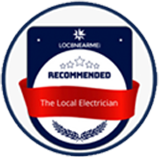Wireless Electrical Transmission – Ever wondered what it would be like to live in a world without tangled wires and constant plug-ins? Wireless electrical transmission is making that dream a reality. Imagine effortlessly charging your phone or powering your home devices without ever needing a cable.
This revolutionary technology is transforming the way we think about electricity and energy use. Ready to dive into how it all works and what it means for the future? Let’s explore the fascinating world of wireless power together!
Understanding Wireless Electrical Transmission
What is Wireless Electrical Transmission?
Imagine charging your phone without plugging it in or powering devices in your home without a single wire. Wireless electrical transmission makes this possible by sending electrical energy from one place to another without using cables.
Key Technologies Behind Wireless Power
The magic behind wireless electrical transmission involves a few key technologies:
- Inductive Coupling: This works by using electromagnetic fields to transfer energy between two coils that are close to each other. Think of it like a magnetic handshake between the two coils.
- Resonant Inductive Coupling: This is a step up from inductive coupling. It allows for a greater distance between the power source and the device by using resonant circuits. It’s like those coils are tuned to the same radio station, so they can “talk” to each other even from a distance.
- Power Beaming: This involves sending power through microwave or laser beams, which can travel much longer distances. Imagine a laser beam of energy shooting across a room to power a device!
These technologies are continuously improving, making wireless power more efficient and useful in various fields. Whether you’re in Katy, TX, or Richmond, TX, the future of power is going wireless, and it’s just around the corner.

How Wireless Power Transmission Works
Inductive Coupling: Basics and Applications
Inductive coupling is one of the most common methods. It works like this: imagine you have two coils of wire. When you pass an electric current through one coil, it creates a magnetic field that induces a current in the second coil if they’re close enough.
This is how some wireless phone chargers work. You place your phone on a charging pad, and the coils in the pad and the phone transfer power through this magnetic field. It’s simple, efficient, and works well for small distances.
Resonant Coupling: Efficiency and Range
Resonant coupling takes things a step further. This method also uses coils, but it tunes them to the same frequency, kind of like how tuning a radio to the right station lets you hear the music clearly.
This tuning allows the energy to be transferred more efficiently over greater distances than inductive coupling. It’s like having a perfect match between the power source and the device, making energy transfer more powerful and effective.
Power Beaming: Using Microwaves and Lasers
Power beaming is where things get really futuristic. This method involves converting electrical energy into a beam of microwaves or lasers and then directing that beam at a receiver, which converts it back into electrical energy.
It’s like a sci-fi laser beam that carries power instead of light. This technology is still in development but has the potential to transmit power over very long distances, making it possible to send energy to remote locations without any wires at all.
Advantages of Wireless Power Transmission
Convenience and Ease of Use
Imagine never having to fumble with plugs and cords again. Wireless power transmission allows you to charge your devices simply by placing them on a surface or within a certain range of a power transmitter.
This convenience can save time and reduce the clutter of cables, making everyday life simpler and more streamlined.
Enhanced Durability and Safety
Without the need for physical connectors, wear and tear on both devices and chargers are significantly reduced. This increases the longevity of your gadgets.
Additionally, wireless power eliminates the risk of electric shocks and reduces the chance of accidents caused by frayed wires, making it a safer option for households, especially those with children and pets.
Flexibility in Device Design
Wireless power opens up new possibilities for device design. Manufacturers are no longer constrained by the need to include charging ports or cable connectors.
This flexibility can lead to more innovative and aesthetically pleasing products. Devices can be fully sealed, making them more resistant to dust and water, and potentially even more durable.
Applications of Wireless Electrical Transmission
Consumer Electronics: Phones and Wearables
One of the most common applications of wireless power is in consumer electronics. Smartphones and wearables like smartwatches can be charged wirelessly, eliminating the need for multiple cables and ports.
Imagine just placing your phone or watch on a charging pad, and it powers up without any hassle. This technology is becoming a standard feature in many of the latest gadgets.
Electric Vehicles: Charging Without Cables
Electric vehicles (EVs) are another exciting area where wireless power is making a significant impact. Wireless charging for EVs allows drivers to charge their cars by simply parking over a charging pad.
No more plugging and unplugging heavy cables. This convenience could make owning and using EVs even more attractive, potentially accelerating the adoption of cleaner transportation.
Industrial and Remote Applications
Wireless power transmission is also valuable in industrial settings and remote locations. For example, in factories, machines and robots can be powered wirelessly, reducing the clutter of cables and increasing flexibility in machine placement and movement.
In remote areas where it’s difficult to lay down power lines, wireless power can provide electricity to equipment and facilities, improving accessibility and operations in those regions.
Challenges and Limitations
Energy Efficiency Concerns
One of the primary concerns with wireless electrical transmission is energy efficiency. Not all the energy transmitted wirelessly reaches the device; some of it is lost in the process.
This loss can be higher compared to traditional wired methods, making it less efficient. Improving the efficiency of wireless power systems is crucial for their widespread adoption.
Cost and Technological Barriers
The cost of implementing wireless power technology can be quite high. The advanced materials and precise engineering required to build efficient wireless power systems are expensive.
Additionally, integrating this technology into existing infrastructure and devices requires significant investment. Overcoming these cost and technological barriers is essential for making wireless power more accessible to the general public.
Safety and Regulatory Issues
Safety is another important concern. There are worries about the potential health effects of exposure to the electromagnetic fields used in wireless power transmission.
Regulatory bodies are working on establishing standards to ensure that wireless power is safe for everyday use. Compliance with these standards can sometimes slow down the deployment of new technologies. Ensuring that wireless power systems are both safe and effective is critical for their success.
Recent Innovations in Wireless Power
Advances in Resonant Coupling
Recent advancements in resonant coupling have significantly improved the efficiency and range of wireless power transmission. Researchers have developed ways to better tune the resonance between the power source and the receiving device, allowing for more effective energy transfer over longer distances.
This means that devices no longer need to be in direct contact with the power source to charge, increasing convenience and usability.
Development of Far-Field Technologies
Far-field wireless power technologies, such as power beaming using microwaves and lasers, are gaining traction. These technologies can transmit power over much longer distances compared to near-field methods like inductive and resonant coupling.
Innovations in this area are making it possible to deliver power to remote or hard-to-reach locations, potentially revolutionizing industries that require long-distance energy transmission.
Breakthroughs in Material Sciences
Material science is playing a crucial role in advancing wireless power technology. New materials with better conductivity and magnetic properties are being developed to enhance the performance of wireless power systems.
These materials help reduce energy loss during transmission and increase the overall efficiency of the system. Such breakthroughs are paving the way for more practical and widespread use of wireless power.
Future Trends and Research
Emerging Technologies in Wireless Power
New technologies are constantly being developed to improve the efficiency, range, and applicability of wireless power.
Researchers are exploring methods like ultra-high-frequency (UHF) transmission and terahertz radiation, which could provide even more efficient and long-range power transfer.
These cutting-edge technologies hold the potential to make wireless power ubiquitous in everyday life.
Potential for Solar-Powered Wireless Transmission
Combining solar power with wireless transmission is an exciting prospect. Solar panels can generate electricity, which can then be wirelessly transmitted to various devices and systems.
This approach could significantly enhance the sustainability and efficiency of renewable energy usage.
Imagine a future where solar panels on rooftops wirelessly power homes and gadgets, reducing our reliance on traditional power grids through the magic of wireless energy transfer.
The Role of WPT in Smart Homes and IoT
Wireless power is set to play a pivotal role in the development of smart homes and the Internet of Things (IoT). With wireless power, smart devices and home automation systems can operate seamlessly without the need for constant recharging or plugging in.
This technology will enable more sophisticated and interconnected home environments, where everything from lights to security systems to appliances can be powered wirelessly, enhancing convenience and efficiency through the power of wireless transmission.
Environmental Impact of Wireless Power
Reducing E-Waste with Wireless Technologies
One of the major benefits of wireless electrical transmission is the potential to reduce electronic waste (e-waste). Traditional chargers and cables wear out over time and need to be replaced, contributing to the growing e-waste problem.
Wireless power eliminates the need for these accessories, reducing the number of discarded electronic components and helping to create a cleaner environment.
Sustainable Energy Solutions
Wireless power can be integrated with sustainable energy sources like solar and wind. By combining wireless electrical transmission with renewable energy, we can create a more sustainable and efficient energy ecosystem.
This integration can help reduce our reliance on fossil fuels and lower carbon emissions, contributing to a healthier planet.
Long-term Ecological Benefits
The long-term ecological benefits of wireless electrical transmission include decreased resource extraction for manufacturing cables and chargers, lower greenhouse gas emissions due to improved energy efficiency, and reduced environmental pollution from discarded electronic components. Over time, these benefits can significantly contribute to global environmental sustainability.
Integrating Wireless Power in Smart Homes
Benefits for Homeowners
For homeowners, the advantages of wireless electrical transmission are substantial. Imagine walking into your home and your devices automatically charging without having to plug them in.
This convenience extends to smart home devices like security cameras, smart locks, and home assistants, all of which can function seamlessly without the need for constant recharging or connecting to power outlets.
This not only simplifies daily life but also reduces cable clutter and enhances the aesthetic of your living space.
Installation and Maintenance Tips
Setting up wireless electrical transmission in your home can be straightforward with the right tips:
- Choose the Right Equipment: Ensure you have compatible devices and charging stations that support wireless power.
- Optimal Placement: Place wireless transmitters in central locations to maximize the range and efficiency of power transmission.
- Regular Maintenance: Periodically check your devices and transmitters for any updates or maintenance needs to ensure they operate efficiently.
By following these tips, you can enjoy a hassle-free and efficient wireless power setup in your home.
Enhancing Home Automation with WPT
Wireless electrical transmission significantly enhances home automation. Smart homes equipped with wireless power can support a wider range of devices, from automated lighting and climate control systems to advanced security features.
This creates a truly interconnected environment where devices communicate and operate seamlessly, improving comfort, security, and energy management within the home. As a result, homeowners can enjoy a more convenient, efficient, and modern living experience.
Safety Measures and Regulations
Standards and Compliance
To ensure safety and reliability, wireless electrical transmission systems must adhere to strict standards and regulations.
Organizations like the International Electrotechnical Commission (IEC) and the Institute of Electrical and Electronics Engineers (IEEE) have developed guidelines to regulate the design, implementation, and operation of wireless power systems.
Compliance with these standards helps ensure that the systems are safe for use in homes and businesses, minimizing the risk of malfunction and interference.
Addressing Health Concerns
Health concerns are a common issue when it comes to wireless technologies. Wireless electrical transmission involves electromagnetic fields, which can raise questions about potential health effects.
However, research and regulations ensure that these systems operate within safe limits. The power levels used in wireless power systems are typically low enough to pose no significant risk to human health.
Additionally, continuous advancements in technology aim to further reduce any potential risks associated with prolonged exposure to electromagnetic fields.
Ensuring Safe Implementation at Home
When integrating wireless electrical transmission at home, safety should be a top priority. Here are some tips to ensure safe implementation:
- Professional Installation: Consider hiring a professional to install and configure your wireless power system to ensure it meets safety standards.
- Regular Monitoring: Periodically check your system for any signs of wear or malfunction. Regular maintenance can help prevent issues before they become serious problems.
- Safe Distances: Follow manufacturer guidelines on safe distances between wireless transmitters and living areas to minimize exposure to electromagnetic fields.
By taking these precautions, you can enjoy the benefits of wireless power while ensuring a safe environment for your family.
Power Up Your Home with The Local Electrician
Ready to embrace the future of wireless electrical transmission? Let The Local Electrician transform your home in Katy, TX, and Richmond, TX, with seamless and safe wireless power solutions.
Enhance your convenience, safety, and efficiency with our expert installation and maintenance services. Contact us today at 346-483-7150 to revolutionize your home’s power system and experience the ultimate in modern living!

FAQs
How does wireless power affect device lifespan?
Wireless power transmission generally does not negatively impact device lifespan. In fact, it can enhance longevity by reducing wear and tear on charging ports and cables, which are common failure points in wired charging systems.
Is wireless power safe for daily use?
Yes, wireless power is safe for daily use. The technology operates within established safety limits for electromagnetic exposure. Regulatory bodies ensure that wireless power systems comply with stringent safety standards to protect users.
Can wireless power transmission work through walls?
Wireless power transmission can work through thin walls, but its efficiency decreases with thicker or denser materials. Technologies like resonant coupling and power beaming can extend the range but still face limitations with significant obstructions.
What are the main benefits of wireless electrical transmission for smart homes?
Wireless electrical transmission offers several benefits for smart homes, including reduced cable clutter, increased convenience, enhanced device design flexibility, and the potential for more integrated and automated home systems.
Are there any health risks associated with wireless electrical transmission?
Current research indicates that wireless electrical transmission poses no significant health risks when systems operate within regulatory limits. As with all technologies, it’s essential to follow manufacturer guidelines and ensure proper installation and maintenance.






























